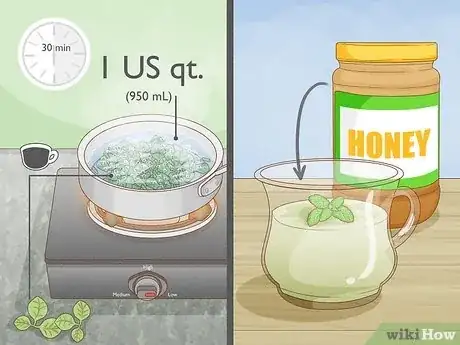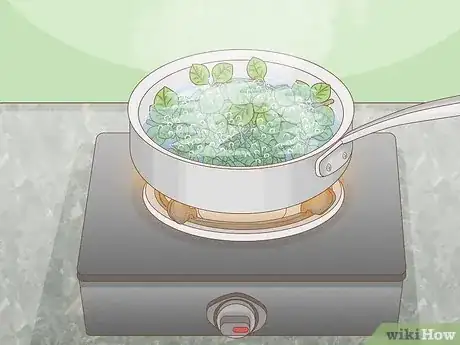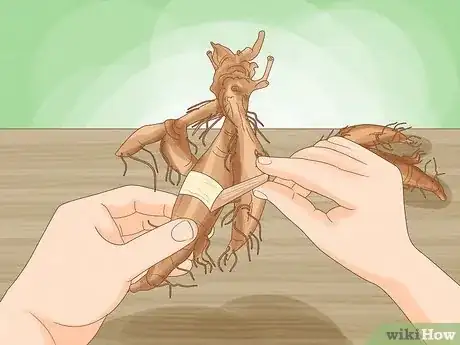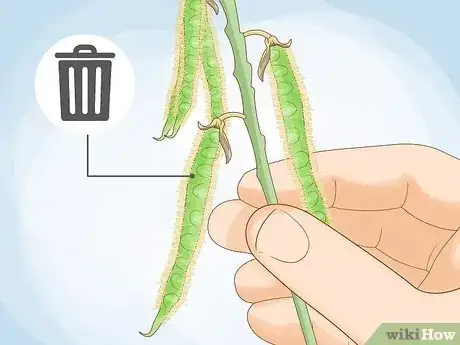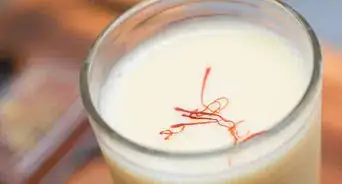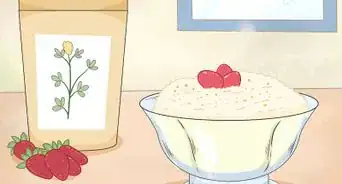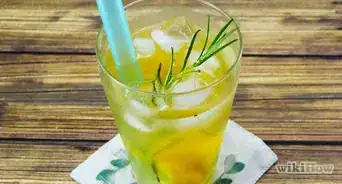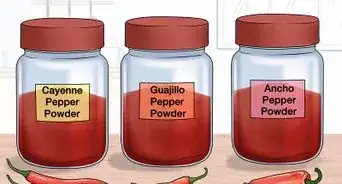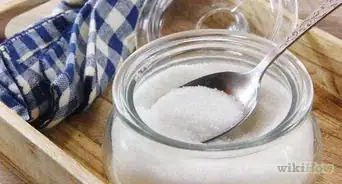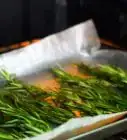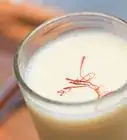This article was co-authored by wikiHow staff writer, Sophia Latorre. Sophia Latorre is a Content Manager on the wikiHow team. Before joining wikiHow, Sophia worked as a technical editor and was published in six International Energy Agency (IEA) Wind Annual Reports. Now, she writes, edits, and reviews articles for the wikiHow Content Team, working to make the content as helpful as possible for readers worldwide. Sophia holds a BA in English from Colorado State University.
There are 12 references cited in this article, which can be found at the bottom of the page.
This article has been viewed 32,537 times.
Learn more...
Is kudzu edible? Absolutely! The blossoms, leaves, vine tips, and roots are all edible, and kudzu is similar in flavor to spinach. While many people think of kudzu only as an invasive species, it was intentionally introduced to the United States from Japan and thousands of acres of it were planted during the Great Depression. If you live in the southern U.S. and have an abundance of kudzu in your area, try harvesting and processing it to create a variety of delicious dishes. Read on to learn everything you need to know about how to eat kudzu.
Steps
Kudzu Recipes
-
1Enjoy kudzu tea from the leaves. Bring 1 US quart (950 mL) of water to a boil and add 1 cup (~30 grams) of chopped kudzu leaves. Simmer the mixture for 30 minutes, then strain out the leaves. Add honey to taste and a sprig of mint as a garnish.[1]
- You can also make tea from the flowers. Just steep and enjoy![2]
-
2Cook the vine tips like collard greens. Boil a batch of leaves and vine tips for 60 seconds to wilt them. Then, you can use them just like other leafy vegetables. Prepare them the way you'd cook collard greens, for instance.[3]Advertisement
-
3Cook the leaves like spinach. Young kudzu leaves have a similar taste to spinach and you can prepare them in a variety of ways! Try steaming, pickling, frying, or simmering them.[4]
-
4Roast the roots like potatoes. After harvesting the roots, peel them. Then, roast them in the oven.[5] Try seasoning them with butter, salt, pepper, and garlic for a tasty side dish.
-
5Toss kudzu blossoms into a salad. Kudzu blooms from July to September and the flowers are purple and smell like grapes. Simply pluck however many flowers you like, wash them, and add them to your favorite salad for a pop of color and flavor.[6]
-
6Make kudzu blossom jelly. Place 4 cups (~180 grams) of Kudzu blossoms in a colander. Give them a quick wash with cold water and then transfer them to a heat-safe bowl. Add in 4 cups (950 mL) of boiling water. Place the bowl in the fridge and let it cool for 8 hours. Strain the liquid into a Dutch oven or saucepan and discard the blossoms. Add 1 tablespoon (15 mL) of lemon juice and 1 package (1.75 oz or ~50 grams) of pectin. Bring the mixture to a boil and add 5 cups (1,000 grams) of sugar. Let the mixture boil for 1 full minute, stirring constantly.[7]
- Remove the saucepan from heat and pour the mixture into 6 sterilized ½ pint jelly jars, leaving 1⁄4 inch (0.64 cm) of headspace.
- Seal the jars and submerge them in boiling water for 5 minutes. Carefully remove the jars and allow them to cool before storing.
-
7Create a kudzu quiche with the leaves. In a medium bowl, stir together 3 eggs, 1 cup (240 mL) of heavy whipping cream, ½ teaspoon (2.8 g) of salt, a pinch of ground pepper, 1 cup (22.5 grams) of grated mozzarella cheese, and 1 cup (~30 grams) of chopped Kudzu leaves. Pour the mixture into an unbaked pie shell and bake for 35 to 45 minutes at 350 °F (177 °C) or until the center of the quiche is set.[8]
-
8Use kudzu starch as a general thickener. Kudzu powder is a particularly good way to add some substance to watery gravies or puddings. Add 1 ½ tablespoons of kudzu powder for every 1 cup (240 mL) of liquid. Keep whisking the liquid until any large clumps are broken down.[9]
- Place the mixture in a saucepan over medium heat until it simmers to speed up the thickening process.
- Kudzu powder has a very mild taste and pairs well with flavorful spices or foods, such as garlic.
-
9Make a lime kudzu pudding with kudzu powder. In a saucepan, mix together 1 can (13.66 fluid ounces (404 mL)) of coconut milk, 2 tablespoons (30 mL) of maple syrup, 1 tablespoon (6 grams) of lime zest, 1⁄4 cup (59 mL) of lime juice, 1 teaspoon (4.9 mL) of vanilla extract, and 1/4 teaspoon (1.5 grams) of salt. Set the heat to medium and simmer the mixture. Add in 3 tablespoons of kudzu powder and let the mixture thicken. Then, pour the pudding into cups and allow it to cool.[10]
- Top the pudding with baked, chopped pistachios.
Harvesting Kudzu
-
1Locate a kudzu patch. Look in wooded areas or fields for a vine system that is large and grows in all directions. Kudzu leaves are green, grow in groups of 3, and are tri-cornered. The vines are hairy and have purple flowers that bloom from July to September in the U.S.[11]
- If you choose to harvest wild kudzu, make sure that the area has not been sprayed with pesticides.
- Kudzu can sometimes be confused with poison ivy. Kudzu stems are hairy while poison ivy stems are not, which is a great way to differentiate the two. Also, kudzu vines climb by twining, and poison ivy doesn’t.
-
2Harvest kudzu all year round. If you are interested in the kudzu blossoms, visit the patch between July and September. Harvest the roots in the winter when the sap is most concentrated. Pick off the young leaves in the spring and early summer for maximum tenderness.[12]
-
3Pick the blossoms. Simply pluck the purple flowers off of the stems or trim the clusters off the vines with garden shears.[13] Collect a lot if you want to make tea or jelly! You’ll use about 5 cups (~180 grams) of blossoms to make 3 pints of jelly.[14] Sort through the flowers and toss any with bugs or damage.[15]
-
4Cut the leaves and vines. Use a sharp knife, heavy scissors, or garden shears to cut the vine tips from the plant. Also, trim the leaves from the vines. For the best taste and texture, choose leaves that are small, young, and bright green.[16]
-
5Dig up the roots. Wear gloves and use a shovel to dig up the surface roots, which are around 1.5 inches (3.8 cm) in diameter and only a few feet deep in the ground.[17] If you want to make kudzu starch powder, dig up the tubers that are 4–6 inches (10–15 cm) in diameter and about 5-10 years old.[18]
Processing Fresh Kudzu
-
1Wash all plant pieces thoroughly. As soon as you bring the harvested plant pieces into your home, take them to the sink and rinse them thoroughly. Remove any dirt, bugs, or stems on the kudzu.
- Lay the pieces out to dry on a towel when you are finished.
- If you are cleaning the roots and tubers, use a scrub brush to remove any caked-on dirt.
-
2
-
3Peel the roots. After you’ve washed off the roots, go ahead and peel them just like you would a sweet potato.[20] Use an industrial strength peeler or sharp knife, if necessary. Then, you can bake, roast, grate, shred, or even pound the root flat.
- To make kudzu starch, mash the peeled roots until they form a grey paste. Use a screen to rinse and filter the paste with water several times until the color begins to lighten to white. Then, set the paste out to dry in a room-temperature, dark space for up to 2 months. Finally, grind the paste into powder.[21]
-
4Discard the seed pods. The green, fuzzy pods that hang from the vines via small stems are not edible. As you are processing your harvest, go ahead and toss both the pods and the seeds inside them.[22]
- Put the seeds and pods in the trash, not your compost, or kudzu could take over your yard and garden.[23]
Warnings
References
- ↑ http://www.southernangel.com/food/kudzurcp.html
- ↑ https://www.foragingtexas.com/2012/09/kudzu.html
- ↑ https://www.foragingtexas.com/2012/09/kudzu.html
- ↑ https://www.cooksinfo.com/kudzu-starch
- ↑ https://www.foragingtexas.com/2012/09/kudzu.html
- ↑ https://www.foragingtexas.com/2012/09/kudzu.html
- ↑ https://www.food.com/recipe/kudzu-blossom-jelly-94579
- ↑ http://www.southernangel.com/food/kudzurcp.html
- ↑ http://www.cooksinfo.com/kudzu-starch
- ↑ https://www.hormonesbalance.com/recipes/sleepy-lime-pudding/
- ↑ https://www.aces.edu/blog/topics/forestry-wildlife/the-history-and-use-of-kudzu-in-the-southeastern-united-states/
- ↑ https://www.cooksinfo.com/kudzu-starch
- ↑ https://www.grit.com/food/cooking-with-kudzu-zm0z20sozbut/
- ↑ https://www.food.com/recipe/kudzu-blossom-jelly-94579
- ↑ https://unrulygardening.com/how-to-make-kudzu-jelly/
- ↑ http://www.southernangel.com/food/kudzurcp.html
- ↑ http://www.foragingtexas.com/2012/09/kudzu.html
- ↑ https://www.cooksinfo.com/kudzu-starch
- ↑ https://davesgarden.com/guides/articles/kudzu-its-history-and-uses/
- ↑ http://www.foragingtexas.com/2012/09/kudzu.html
- ↑ http://www.cooksinfo.com/kudzu-starch
- ↑ http://www.foragingtexas.com/2012/09/kudzu.html
- ↑ https://eattheplanet.org/kudzu-an-invasive-weed-with-hidden-virtues/
- ↑ https://www.foragingtexas.com/2012/09/kudzu.html
- ↑ http://www.foragingtexas.com/2012/09/kudzu.html
